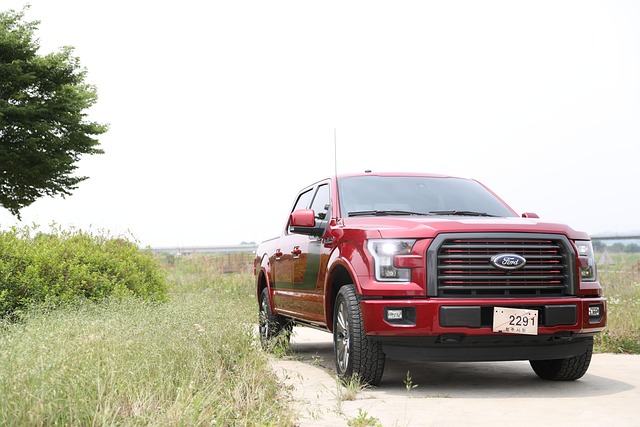Looking to register your car in California? This comprehensive guide breaks down the process step-by-step. First, understand California’s unique car registration requirements and essential documents needed. Next, learn how to conduct a DMV VIN (Vehicle Identification Number) verification for accuracy. Then, choose between online or in-person registration, ensuring all fees are paid and you receive your plate stickers. Master these steps and hit the road with confidence!
- Understand California Car Registration Requirements
- Gather Necessary Documents for Registration
- Perform DMV Vehicle Identification Number (VIN) Verification
- Complete Online or In-Person Registration Process
- Pay Registration Fees and Obtain Plate Stickers
Understand California Car Registration Requirements

Before registering your car in California, it’s crucial to understand the state’s specific requirements for vehicle registration and documentation. The California Department of Motor Vehicles (DMV) oversees this process, ensuring all vehicles on the road meet safety standards and are properly identified. One essential step is the DMV’s Vehicle Identification Number (VIN) verification, which checks the vehicle’s history and ensures it’s not stolen or has any outstanding issues. This process is typically done by providing your VIN to the DMV, either online or during a visit to a local office.
Additionally, when registering your car in California, you might consider utilizing a mobile vin inspection service. These services send a professional to your location for on-site VIN verification, making the process more convenient, especially if you have a busy schedule. With a simple vin inspection, you can ensure that all documents are in order and your vehicle is compliant with California’s registration guidelines, paving the way for a smooth and efficient registration experience.
Gather Necessary Documents for Registration

Before you begin the registration process, it’s crucial to gather all the essential documents required by the California Department of Motor Vehicles (DMV). This includes your vehicle’s registration from the previous state, a valid driver’s license, proof of insurance, and perhaps most importantly, a reliable method for DMV VIN verification. The Vehicle Identification Number (VIN) is a unique code that identifies your car, and a mobile vin inspection or vin inspection performed by a professional is recommended to ensure accuracy.
Make sure you have the vehicle’s title in hand as well, as it’s necessary for transferring ownership. Additionally, prepare any other paperwork related to previous registrations, tax documents, or recent repairs to streamline the process. With these necessary documents, you’ll be well on your way to completing the car registration in California efficiently and without hassle.
Perform DMV Vehicle Identification Number (VIN) Verification

Before registering your car in California, it’s crucial to perform a DMV Vehicle Identification Number (VIN) verification. This step ensures that the vehicle matches the details provided on the registration documents. Many residents opt for a mobile vin verifier or vin inspection service to streamline this process. These services often offer convenient and quick mobile vin verification, allowing you to check your car’s history from the comfort of your home or office.
By cross-referencing the VIN with state records, the dmv vin verification process helps identify any discrepancies, such as a car being reported stolen or having outstanding loans. Ensuring accuracy during registration is essential to avoid legal issues and potential delays. Therefore, it’s recommended to have this step completed before proceeding with the registration at the California Department of Motor Vehicles (DMV).
Complete Online or In-Person Registration Process

In California, registering your car involves either completing a fully online process or visiting a DMV office in person. The first step for both methods is to gather all necessary documents, including proof of ownership, insurance, and identification. Once prepared, individuals can opt for the speed and convenience of digital registration via the DMV’s website, where they’ll need to input their Vehicle Identification Number (VIN) and follow the online instructions. This process involves a comprehensive dmv vin verification, ensuring the vehicle’s authenticity and history are accurately checked.
For those who prefer or require in-person registration, visiting a local DMV office is necessary. Here, staff can guide you through the steps, including conducting a vin inspection to verify the vehicle’s details. Alternatively, some services offer mobile vin verifier options, allowing for even greater flexibility by performing the VIN inspection right at your location. This modern approach streamlines the traditional process, making car registration in California more accessible and efficient.
Pay Registration Fees and Obtain Plate Stickers

After completing your vehicle’s registration application at the California DMV, it’s time to settle the fees. The cost of registering a car in California varies based on factors such as the age and make of your vehicle, but typically includes a base fee plus emissions testing and vehicle inspection charges. Ensure you use a trusted mobile vin verifier or undergo a vin inspection to verify your vehicle’s history accurately; this step is crucial for ensuring you’re paying the correct fees.
Once your registration fees are paid, you’ll receive plate stickers. These stickers must be displayed on both the front and rear license plates of your vehicle. A mobile vin verification can help streamline this process by providing instant access to your car’s history, which includes details about any previous owners, accidents, or outstanding issues that could affect registration. Make sure to affix the stickers properly according to California DMV guidelines.
Registering a car in California involves understanding state requirements, gathering essential documents, and completing either an online or in-person registration process. After passing the required DMV VIN verification, you’ll pay relevant fees and obtain your plate stickers. By adhering to these steps, you’ll ensure your vehicle is legally registered and ready for California’s roads.
